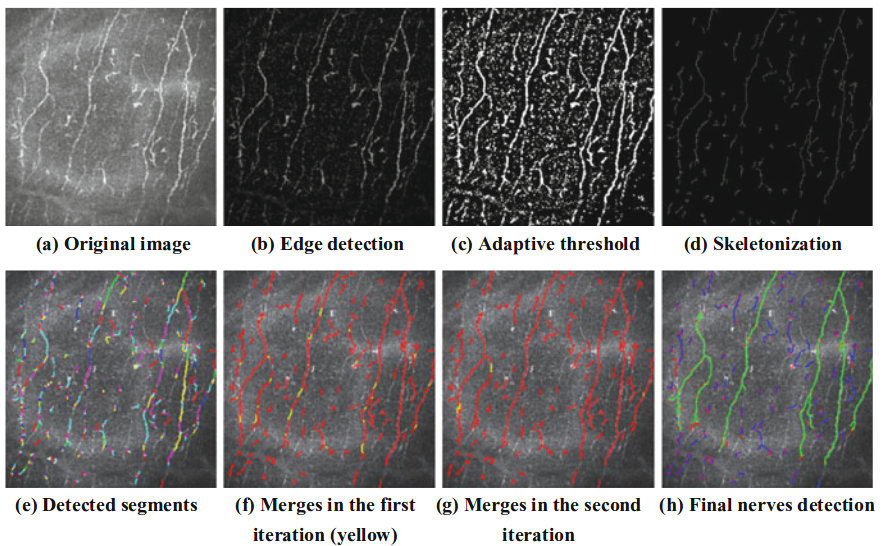Adam Brzeski
https://link.springer.com/content/pdf/10.1007%2F978-3-319-46589-0.pdf
The paper presents an algorithm for improving results of automatic nerve detections in confocal microscopy images of human corneal.
The method is designed as a postprocessing step of regular detection. After the nerves are initially detected, the algorithms attempts to improve the results by filling undesired gaps between single nerves detections in order to correctly mark the entire nerve instead of only parts of it. This approach enables for reliable detection of long nerves, which can be used for more accurate elimination of short detections and therefore eliminating noise.
The method evaluates candidate gaps by analysing the orientation of segments to be merged in the area near the gap. Segments with sufficiently high orientation compliance are merged to form a single nerve detection. Despite using only a simple technique for initial detection of nerves, the method enabled achieving a fairly low ratio of wrong nerve detections with a balanced level of overall accuracy.
Proceedings of 37th International Conference on Information Systems Architecture and Technology?ISAT 2016?Part III (pp. 55-63). Springer, Cham.
